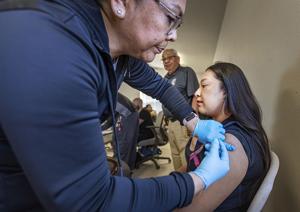Sleep plays a vital role in children’s growth and development, yet many are not getting enough rest. The American Academy of Pediatrics (AAP) reports that insufficient sleep among children is increasingly recognized as a significant health issue. Estimates suggest that between 25 to 50 percent of children experience sleep problems, alongside 40 percent of adults. This lack of sleep can lead to serious consequences, including difficulties with attention, behavior, and learning, as well as heightened risks for conditions such as obesity and depression.
The AAP has updated its sleep guidelines over the years to address these concerns. Parents and caregivers are encouraged to prioritize consistent bedtime routines, which can foster better sleep patterns for children. The guidelines emphasize that children aged 1 to 2 years should ideally get between 11 to 14 hours of sleep, including naps, while those aged 3 to 5 years should aim for 10 to 13 hours.
Research consistently shows that establishing a regular sleep schedule significantly enhances children’s overall well-being. Studies indicate that children who maintain consistent bedtimes perform better academically and have improved emotional regulation. Furthermore, sleep affects physical health; a lack of adequate rest can disrupt metabolic functions, contributing to obesity and related health issues.
The AAP’s guidelines also highlight the importance of creating a conducive sleep environment. This includes limiting exposure to screens before bedtime, as blue light can interfere with the body’s natural sleep-wake cycle. The organization advises that children should avoid electronic devices at least one hour before going to bed to encourage a smoother transition to sleep.
Parents play a crucial role in modeling healthy sleep habits. By prioritizing their own sleep and demonstrating a commitment to bedtime routines, caregivers can instill positive behaviors in their children. The AAP suggests that family members engage in calming activities, such as reading or storytelling, to help children unwind before sleep.
In addition to behavioral strategies, the AAP stresses the need for awareness regarding sleep disorders. Conditions such as sleep apnea or restless leg syndrome can significantly hinder a child’s ability to rest adequately. Parents are encouraged to seek professional advice if they suspect their child may be experiencing such issues.
As sleep continues to be a pressing concern for families, the AAP’s guidelines serve as a valuable resource for parents navigating the complexities of children’s sleep needs. With the right approach, families can foster healthier sleep habits that support their children’s development and well-being.
In conclusion, prioritizing sleep through structured bedtimes and creating an optimal sleep environment can significantly benefit children’s health and development. The AAP’s emphasis on these guidelines is a reminder of the essential role sleep plays in nurturing the next generation.






